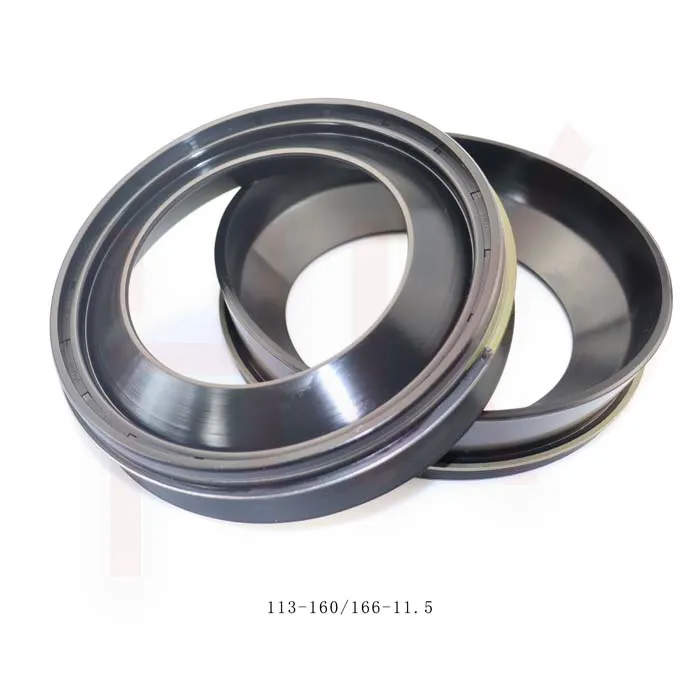Sep . 16, 2024 13:06 Back to list
hydraulic ram seal replacement
Hydraulic Ram Seal Replacement A Comprehensive Guide
Hydraulic rams are essential components in various machinery, including agricultural equipment, construction machines, and automotive systems. They utilize hydraulic pressure to perform tasks such as lifting, pushing, or even steering. However, like any mechanical part, hydraulic rams can experience wear and tear over time, leading to the need for seal replacement. In this article, we will explore the steps involved in replacing seals in hydraulic rams, ensuring optimal performance and longevity.
Understanding Hydraulic Ram Seals
Hydraulic ram seals are crucial for maintaining the integrity of hydraulic systems. They prevent fluid leakage, which is vital for the efficient operation of hydraulic devices. Over time, seals can degrade due to factors such as heat, pressure, and exposure to hydraulic fluids, leading to performance issues and potential system failure. Regular inspection and timely replacement of these seals are essential for ensuring reliable operation.
Signs of Seal Failure
Before proceeding with a seal replacement, it’s important to recognize the signs of seal failure. Common indicators include
1. Fluid Leaks Visible hydraulic fluid around the ram is a clear sign that the seals may be compromised. 2. Decreased Performance If the hydraulic ram is struggling to maintain pressure or perform its intended function, it may be due to worn seals. 3. Unusual Noises Grinding or hissing sounds may indicate air entering the hydraulic system, often a result of faulty seals.
Steps for Seal Replacement
1. Preparation Before starting, ensure you have the necessary tools, including wrenches, seal pullers, and cleaning supplies. It’s also advisable to have replacement seals on hand, which can be sourced from the manufacturer or a trusted supplier.
hydraulic ram seal replacement

2. Depressurize the System Safety is paramount. Before disassembling the hydraulic ram, ensure that the system is depressurized to prevent accidental discharge of hydraulic fluid.
3. Disassembly Carefully remove the hydraulic ram from its mounting. Use wrenches to loosen any bolts or fittings, ensuring you keep track of all parts for reassembly.
4. Removing Old Seals Once the ram is disassembled, you can access the seals. Use a seal puller to carefully remove the old seals without damaging the ram’s housing.
5. Cleaning the Components Before installing new seals, clean the surfaces to remove dirt, old seal material, and any remaining hydraulic fluid. This ensures a proper seal and prevents future leaks.
6. Installing New Seals Carefully position the new seals in the ram. Ensure that they are installed evenly and correctly to avoid misalignment or damage during reassembly.
7. Reassembly Once the new seals are in place, reassemble the hydraulic ram, ensuring that all parts are securely tightened and aligned correctly.
8. Testing After reassembly, reconnect the hydraulic ram and gradually reintroduce pressure into the system. Monitor for any leaks or issues, ensuring the seals are functioning correctly.
Conclusion
Replacing seals in hydraulic rams is a critical maintenance task that can significantly enhance the longevity and efficiency of hydraulic systems. By recognizing the signs of seal failure and following the outlined steps for replacement, you can ensure your hydraulic ram operates smoothly for years to come. Regular maintenance and timely replacements will save you from costly repairs and downtime, keeping your machinery in top condition.
-
Metric Wiper Seals: Protecting Hydraulic Systems Worldwide | HKA ISeal
NewsNov.25,2025
-
Metric Rod Wiper Seals - Durable, Precision Sealing for Hydraulic Systems
NewsNov.25,2025
-
Comprehensive Guide to Shaft Seal Wheel Hub – Design, Application & Future Trends
NewsNov.25,2025
-
Reliable Hydraulic Wiper Seals for Industrial Efficiency – HKAI Seal
NewsNov.25,2025
-
Hub Bearing Seal – Durable, Efficient Sealing Solutions for Global Industry
NewsNov.25,2025
-
Defender Hub Seal – Protecting Industrial Hubs Worldwide with Precision and Durability
NewsNov.25,2025
-
Durable 14 Bolt Hub Seal Solutions for Heavy-Duty Vehicles & Machinery | H.K. Ai Seal
NewsNov.25,2025
Products categories
















